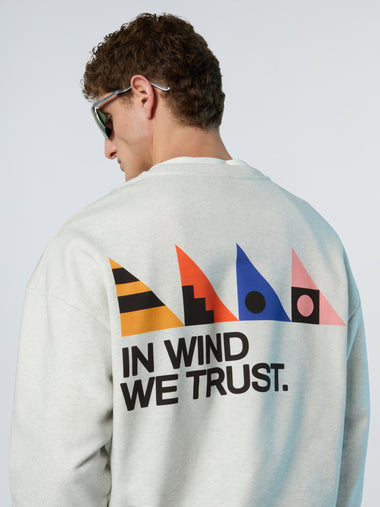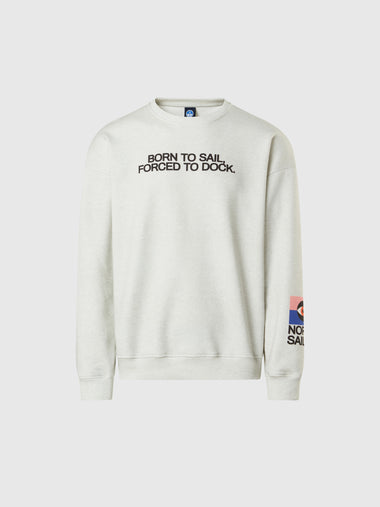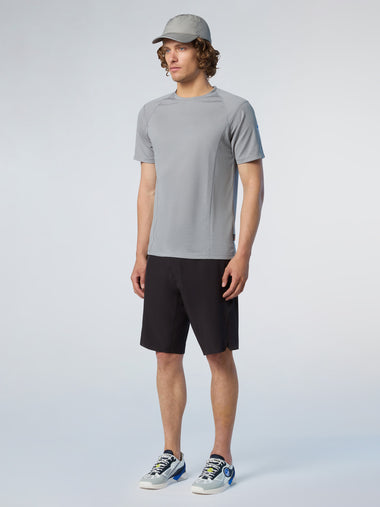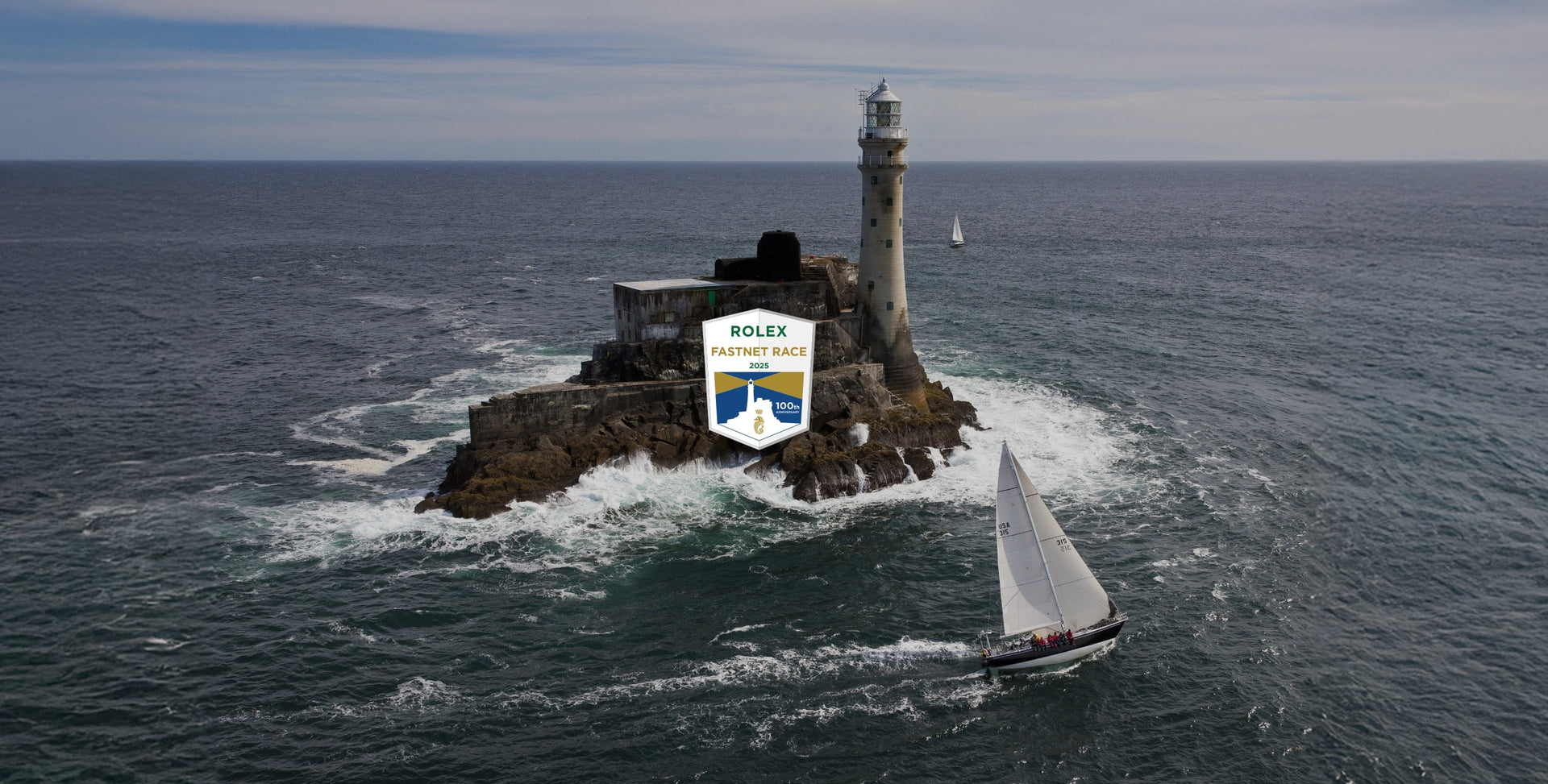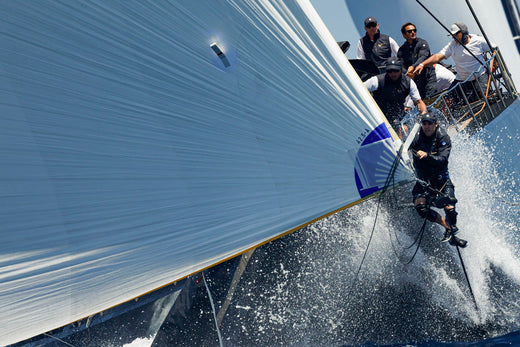1957 - THE PURSUIT OF BETTER SAILS
“If I started a sailmaking company, would you buy a sail from me?”
That’s what Lowell North asked his friend John Shoemaker, one afternoon in 1957, while seated at the bar of San Diego Yacht Club. John replied, “Yes, I would,” which surprised Lowell. Sure, they were friends, but neither man could predict that Lowell’s new company would eventually grow into the largest sailmaking business in the world. Or that along the way, Lowell would become a world champion sailor and two-time Olympic medalist.
During a recent interview at his house in Point Loma, Lowell told us John’s answer “gave me the encouragement to start North Sails.” He admitted that before starting the company, he hadn’t built many sails. He said it took him years to figure out how to make a fast shape, but Lowell quickly became known for his unique approach in an industry where he had little experience. And 60 years later, a scientific approach to material and product testing, as well as analytics-based sail design and performance development, continues to be the backbone of North Sails.
“The realization that I didn’t know anything about sail shape was really a big help,” Lowell explained. “I was then able to test a great variety of shapes, some of which tested faster. This objectivity helped us to make a lot of progress in sail shape.”

After that drink with John Shoemaker, Lowell dove in. It all started in a rented 20 x 80 foot space at the B Street Pier in downtown San Diego. He quit his job as an aerospace engineer at Narmco, and went to work on the floor building Snipe and Star sails. The early days were shaped by a tight group building a modest business. Lowell’s first wife Kay did the bookkeeping. Their first hire was a seamstress, Daisy. Next was Paul Merrill, who had worked for Herb Sinnhoffer sailmakers; he bridged the delicate gap between employee and teacher. Other early staff included friends like Earl Elms and Tom Nute, and later Pete Bennett from Murphy and Nye in Chicago.
“Pete brought a lot of really good production techniques with him, and established ways of cutting and sewing sails more accurately and efficiently,” Lowell said. “We started making Snipe sails, which was the first class we were really successful in. Meanwhile, Paul’s plan was to retire a few years from then and sail around the world.”
“Did he do it?” we asked.
“I haven’t seen Paul Merrill in years. I suspect he did.”
Around 1962, Lowell and production manager John Rumsey began empirically testing sailcloth stretch and fatigue. They read the numbers and confirmed the market standard was far too low. They could do better.
“The sails on the market weren’t good enough. I started re-cutting my Star sails from the prominent West Coast sailmaker at the time
“We began testing cloth samples by attaching them to the antenna of my car. We called it flutter testing, it seemed to match the real life degradation of the material and gave us a pretty good inkling of how the sail cloth would degrade in actual use. We later simulated the car antenna flutter testing by building an in-house machine which spun the attached samples on a rotating wheel or arm.”

This was the beginning of a long history in material development. The “30/30 benchmark” became known among cloth specialists: 30 minutes at 30 miles per hour. Looking past woven polyester, Lowell and textile converter Noah Lamport created the first laminated sailcloth, used on the 12 Meter Enterprise in 1977. In 1980, launching NorLamTM (a polyester/Mylar laminated sailcloth) complemented the company’s introduction of radial panel sail layouts.
Lowell’s legacy continued with patented three-dimensional membranes (1992), followed by the first warp-oriented polyester sailcloth, North Sails Radian™ (2008). North Sails 3Di composite membranes went to market in 2011, and they are continually improved by materials research out of the Minden loft. The capacity of North Sails 3Di technology continues to expand as designers and product engineers learn to adapt the product to new sailing markets. Ask North Sails designers today, and they’ll tell you it’s all about the strength and shape of the membrane – which goes right back to the same qualities Lowell was testing for.

On the water, Lowell is known as one of those guys who just “got it.” Renowned for his results in the Star Class, he medaled in 12 World Championships over 25 years and won gold at the 1968 Olympic Games in Mexico City. He also won a bronze medal in the Dragon at the 1964 Tokyo Games. It was during this time that North Sails was first getting off the ground, and Lowell met many people who would become key players in its expansion.
“Peter
Peter Barrett founded the second North Sails loft (Seal Beach, CA) before moving home to Pewaukee, WI to start North Sails Midwest, the first loft outside California. Eckart Wagner broke ground in Germany in 1966, followed by Andre Nellis with North Sails Belgium. Later, North Sails Italia came online with the arrival of Robin Morgan.
“At some point I went to a school for executives. They taught me if you put together a group of men that were fairly hungry for something, and you worked to provide them with what they wanted, they would help create a successful organization. The term Tiger seem to fit the personality of our loft managers at the time; they were hungry.”
At this point in the interview, Lowell’s wife Bea chimed in. “We were in Portofino, in a little medieval castle in the old port, to accept a “Life of Sailing” award for Lowell. The Italian TV guy asked me, “Do you know who you’re with? Do you really know who you’re with?” and I said, “Well, who am I with?” He said, “The man that revolutionized the world of sailing.”
Lowell replied, “I think I brought together a great group of guys whose ideas and thoughts made for a very innovative company, and a profitable organization.”
For 27 years, Lowell led North Sails to new heights by being a true pioneer. He crafted ways to test the strength of raw materials, introduced computer-driven cloth-cutting machines, and performed the first computerized structural analysis of upwind sails. Along the way, he built a trusted team from the ground up and found personal success with the products he offered. By devising his own approach, he established a new industry standard and left his company with an ideology that still survives today.
As we celebrate the 60th anniversary of North Sails, Lowell reflected on how the sport has changed by weighing in on a much-debated topic between traditional and modern sailors. “Sailing has changed very little, in that wind and water are the same. Racing and winning still rely more on the skill of the skipper then on the equipment. 60 years from now? Not much difference: bigger, faster and more aerodynamic boats, bigger sails and probably more foils.”
We asked, “What makes a master sailmaker?” and “What is the greatest strength of North Sails?” Lowell had the same answer to both questions: “The ability to build fast sails.”
We asked his favorite place to sail and he replied truthfully, “In the ocean off Point Loma in San Diego.”
“The worst place?” we asked.
“I stay away from places like that.”








